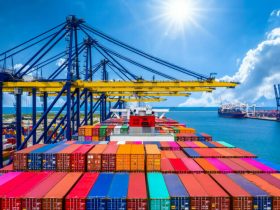
Main Businesses in Micronesia
The Federated States of Micronesia (FSM) is an island nation in the western Pacific Ocean, comprising four states: Yap, Chuuk, Pohnpei, and Kosrae. Its economy relies heavily on traditional industries, small-scale enterprises, and external financial support. Below are the main business sectors in Micronesia:
1. Agriculture and Fisheries
Agriculture and fishing form the backbone of Micronesia’s subsistence and export economy. Many locals engage in small-scale farming, cultivating crops like taro, breadfruit, bananas, and yams. Copra (dried coconut meat) production also plays a significant role.
The fisheries sector, particularly tuna fishing, is a primary export contributor. The Exclusive Economic Zone (EEZ) of Micronesia is rich in marine resources, and licensing agreements with foreign fishing fleets generate significant revenue.
2. Tourism
Tourism is an emerging industry in Micronesia, attracting visitors to its pristine beaches, diving spots, and unique cultural heritage. Notable attractions include the UNESCO-listed Nan Madol ruins in Pohnpei and the crystal-clear waters of Chuuk Lagoon, a global diving destination known for its WWII shipwrecks.
Although tourism is underdeveloped compared to other Pacific nations, it is a growing business area with potential for eco-tourism, cultural tourism, and adventure travel.
3. Government and Public Sector
The government is the largest employer in Micronesia, funded primarily by international aid, particularly from the United States under the Compact of Free Association (COFA). Public sector jobs dominate the formal employment landscape, including education, healthcare, and administrative services.
4. Trade and Retail
Small-scale trade and retail businesses serve the local population. Family-owned stores and market vendors supply essential goods, often imported from larger economies like the U.S., Japan, and Australia. Local crafts, including traditional weaving and carving, are also part of the trade economy, catering to tourists and export markets.
5. Construction
Construction is an active sector driven by infrastructure projects funded through international aid and government budgets. The focus is on building roads, schools, healthcare facilities, and renewable energy systems. Small construction firms are prevalent, employing local labor and resources.
6. Telecommunications and Technology
Telecommunications is a growing industry, with efforts to expand connectivity through satellite and fiber-optic systems. Companies like FSM Telecommunications Corporation are working to improve internet access, enabling opportunities in e-commerce, remote work, and digital education.
7. Renewable Energy
Micronesia is investing in renewable energy projects to reduce reliance on imported fossil fuels. Solar and wind energy initiatives provide opportunities for businesses specializing in sustainable energy technologies and infrastructure development.
Challenges and Opportunities
Micronesia faces challenges such as geographic isolation, reliance on imports, and vulnerability to climate change. However, these issues also create opportunities in climate-resilient infrastructure, sustainable tourism, and renewable energy development.
Conclusion
Micronesia’s main businesses reflect its natural resources, cultural heritage, and strategic reliance on international partnerships. By fostering sectors like tourism, fisheries, and renewable energy, the nation can create sustainable economic growth and diversify its economy. As global interest in the Pacific region grows, Micronesia has the potential to leverage its unique strengths for long-term prosperity.



Leave a Reply